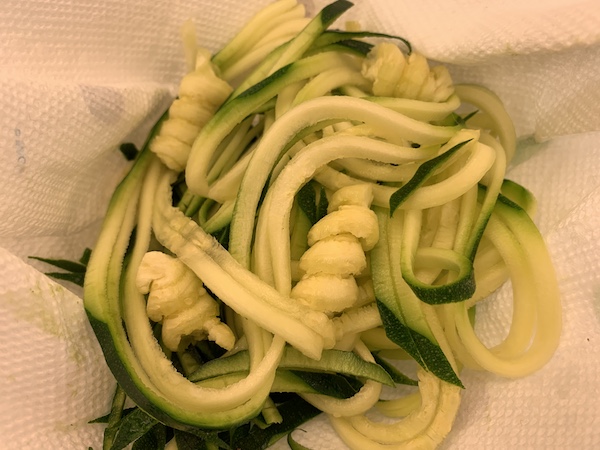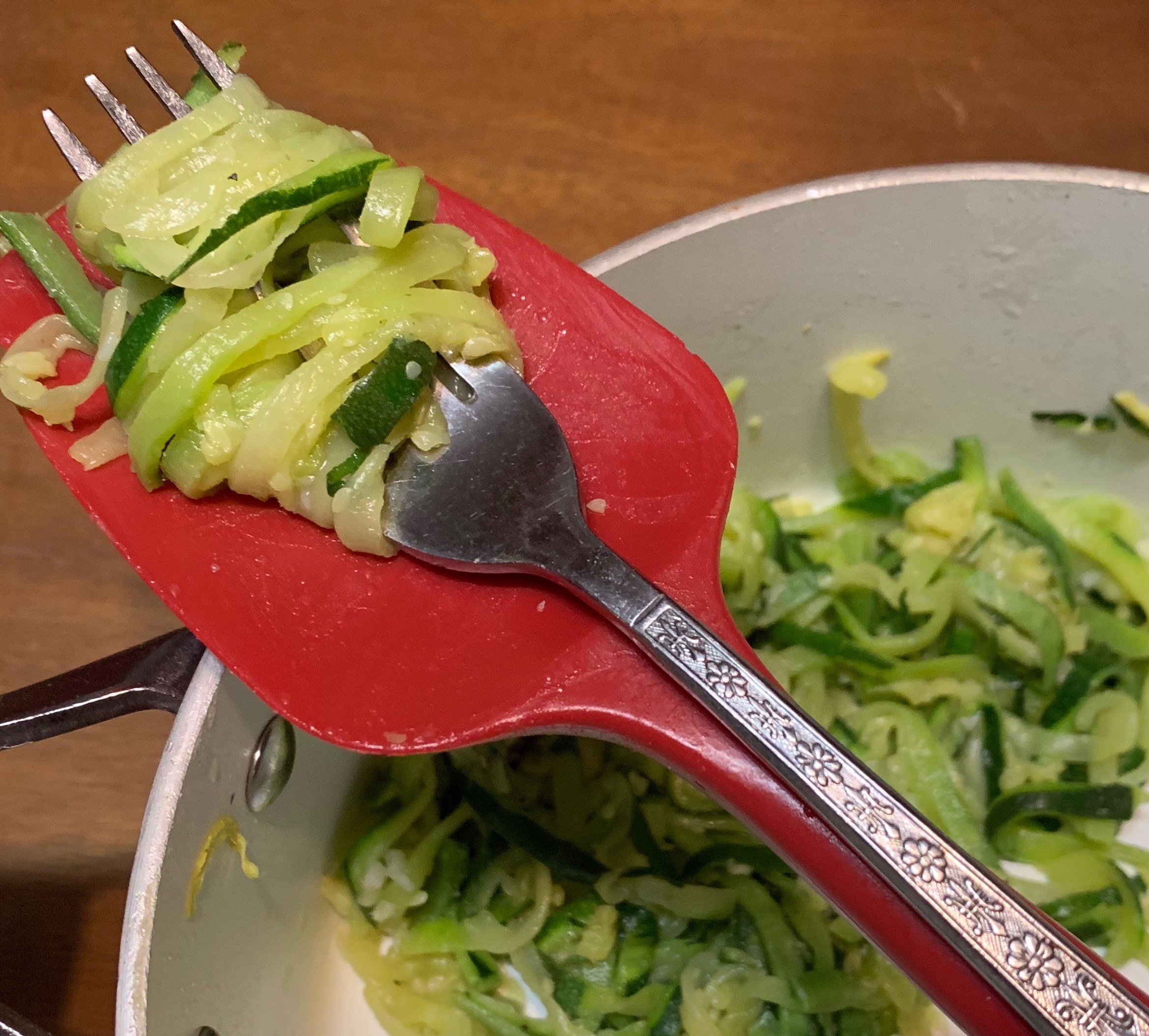Comparing Zoodles
Are All Zoodles Created Equal?
Zoodles, thin noodle shapes created from fresh zucchini (for anyone left out in the dark), are now proven to be more than just a phase. They are a healthy, versatile and delicious alternative to the heavy carbohydrates contained in noodles. Not to mention that they are a gluten-free alternative for pasta dishes everywhere.
In fact, they have gained so much popularity that they are now available ready-made from not only zucchini but most any other vegetable one might desire… thus the term Voodles to refer to all vegetable noodles in general. But, are ready made voodles a good way to purchase fresh vegetables? Let’s compare purchasing zucchini and ready made zoodles, including the question of how long zoodles last in the refrigerator.

Comparing Product Shelf Life - Zoodles
Packaged Zoodles vs Homemade Zoodles
Is it better to buy or DIY zoodles?
Let’s look at each option and compare the
advantages and disadvantages. We’ll discuss
shelf life near the end of this section.
Store-bought Zoodles:
They are quicker by maybe five minutes tops, including clean-up, over making homemade ones.
Whole zucchini can cost anywhere up to about $3 per pound whereas prepared zoodles in a bag can cost up to $6 per pound. That’s a pretty high cost for about 5 minutes of labor. At that cost, the price of purchasing a spiralizer (around $10 for the basic tool) can be re-cooped in about 2-3 dishes! A simple spiralizer (see the additional info section below) will do the trick, no need for a big fancy machine unless you are a zoodle fanatic and make them all the time. Note: these prices may not be completely accurate for your area, but whatever the cost it is generally about twice the price to purchase pre-made zoodles instead of whole zucchini.
Homemade Zoodles:
Cut the zucchini and then use it for the freshest taste and texture possible. It’s just like making fresh noodles vs those coming in a package.

Shelf Life
The biggest difference between packaged zoodles and
homemade zoodles is the shelf life.
Fresh whole zucchini, or whichever vegetable you are
choosing to spiralize, will last longer than those
already spiralized and packaged. Whereas a whole
zucchini can last a week or so, pre-packaged zoodles
will become soggy and mushy after about three days.
Moisture is released from all of the cut edges of
zucchini and we all know that more moisture provides
a much better breeding ground for bacteria to grow
and thrive. If the zoodles are in this soggy
condition, they will not perform well in any dish,
the texture will be mushy and they will not taste
very good. And worse, they could potentially be
dangerous to eat if bacteria begins growing in the
moisture.
Taste, Texture, Price, Time, Shelf life
In summary, we feel that homemade zoodles are the
winner when speaking of taste, texture, price and
shelf life. The only factor where the pre-packaged
ones grab the advantage is time… but, like we
said the few extra minutes to make them fresh is an
investment worth the while and the price of the
machine. To help with this one minor disadvantage
simply make the Zoodles ahead of time and store them
properly, most people actually find this preferable
(see the storage section).
How to Eat Zoodles
Zoodles can be eaten raw, warmed in an oven, boiled in water, microwaved or heated in a pan on the stove (our preference). We like to put a little butter in the bottom of the pan and then heat them on medium heat for about five minutes, shaking the pan to stir once and awhile. Sprinkle them with a little parmesan and roll them up just like spaghetti for a tasty bite. Of course they are also good with any type of sauce or as a substitute for pasta in most any recipe.

How to Store Zoodles and Voodles
Store zoodles and voodles in sealed containers in the refrigerator, but line the container first with a paper towel (or clean cloth). The towel will absorb any moisture that leaks from the cut zucchini. They can be left in a bowl completely wrapped in a towel for a day or so. Zoodles will keep for 4 to 5 days in the refrigerator, but that is if the paper towel is changed out for a dry one after two days of storage. If the zoodles are not cut the day before, then draw as much moisture from the vegetable as possible by salting it and then letting it sit out on towels for 20-30 minutes prior to use. Use the towels to absorb as much moisture as possible, but never press on them or they will become mushy. The texture of the zucchini becomes more like pasta when as much moisture as possible is extracted from the spirals.
For longer term storage, zoodles can also be frozen (after being allowed to drain on a towel) and then put directly into boiling water from frozen when ready to use in place of pasta. They should remain nicely frozen for about 6 months.
Comparing Product Shelf Life
Additional Information
Here’s the cheap and easy spiralizer that we
mentioned above:
To find out how long zucchini lasts, see our zucchini page.
Cauliflower rice can be purchased in a package or made easily at home, with the main DIY advantages again being shelf life and price.
Another item that can be purchased in a block or already shredded is cheese, see our block vs shredded cheese post to fully compare these two items.










